Battling for survival along the warming source of Blue Nile

With increasing incidence of erratic rainfall and flooding affecting their crops, groups of small holder farmers switch from rain-fed summer farming to irrigated winter farming through a government-assisted programme, and find it immensely beneficial for their income and food security.
For many years, 43-year-old Endalew Tegegn depended on the steady summer rains to grow his chilli, the millet-like grain teff, tomato and cabbage in Bahir Dar Zuria, Amhara Regional State in northern Ethiopia.
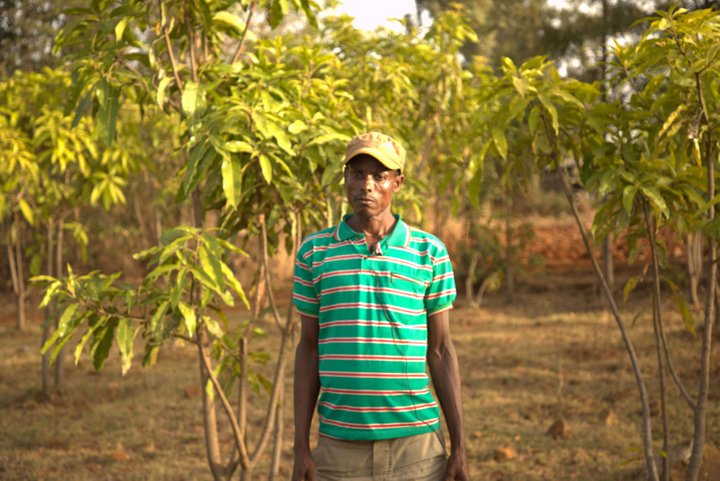
But erratic rainfall and flooding had led to a poor harvest in recent years. So, Tegegn, who lives beside Lake Tana, the source of the Blue Nile River, decided to make a drastic change: growing crops in the winter. And today, Endalew's winter farming not only enables him to sustain his 7-member household, but also supply the surplus to the market.
The winter farming system, supported by a government initiative, helps the farmer pump water from Lake Tana to his farmland and get higher yields than rain-fed summer farming. The switch also allows him to save on energy and fertiliser costs.
“When I compare the winter and summer agriculture, growing the same crops in both the seasons, I find the bega (winter in Amharic) agriculture more than two times beneficial. I think the yield was less because of the heavy summer rain. The winter yields are the highest,’’ said Tegegn.
The Amhara Regional State Bureau of Agriculture has appointed agriculture extension experts throughout the region to train a group or cluster of farmers in irrigated winter farming.
“The winter cluster farming is practised in the Amhara region in collaboration with the Ethiopian Agricultural Transformation Agency (ATA),” said Birehan Tilahun, one of the extension experts working in the region for the last nine years.
In a cluster farming system, a group of 30-60 or 60-120 farmers cultivate a single crop, according to Birehan. This enables households gain better productivity by sharing costs in fixing irrigation systems and in buying fertilisers and pesticides.
The government, along with several NGOs, creates awareness, trains farmers, helps farmers form clusters, and advises farmers how to minimise harvest losses.
"At the beginning, we selected potential areas for irrigation and conducted a survey in collaboration with the Ministry of Agriculture. Then we established farm schools where the farmers meet once a week and discuss cluster farming and the use of better seeds for increased productivity," says Belay Alebachew, project officer at Horticultural Livelihoods, Innovation and Food safety in Ethiopia (Horti-LIFE) project, supported by SNV, an international development organisation.
Now Tegegn grows onion, tomato and cabbage in an irrigation-assisted winter farming system.
There are bottlenecks in constructing canals and finishing irrigation dam works. However, according to Tilahun, the Amhara Regional State Bureau of Water Resources Development has designed a project to use water resources and increase productivity through irrigation-assisted farming.
“As long as we live near Lake Tana, we have no water supply problem. We pump water from the lake to our land using a canvas pipe,” says Tegegn. He opines that the government should provide the farmers with a motor pump and fuel.
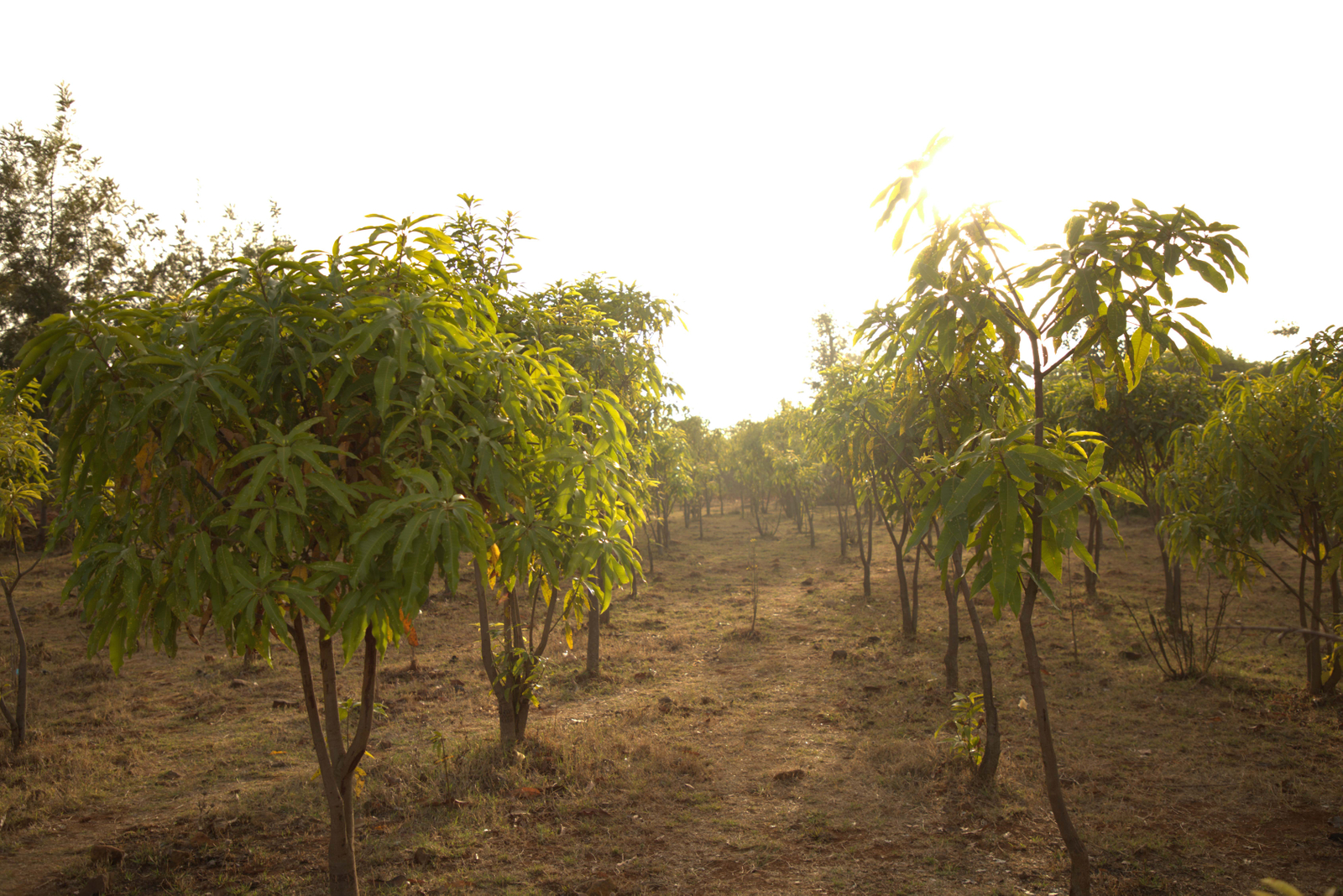
The mighty Nile from the source to the river
The Nile (or Abay in Amharic) is the world’s longest river. It flows for 6,695 kilometres from South to North Africa before joining the Mediterranean Sea. The Nile has two main tributaries, the White Nile and the Blue Nile, and is shared by 11 countries, namely, Ethiopia, Eritrea, Egypt, Sudan, South Sudan, Uganda, Kenya, Tanzania, Burundi, Rwanda and the Democratic Republic of Congo.
The White Nile, originating in Lake Victoria, Uganda, flows north through Tanzania and Kenya. The Blue Nile or Abay originates in Ethiopia’s highlands of the Amhara region and flows through Sudan where the two tributaries meet and snake northwards to the Mediterranean Sea in Egypt. Data shows that 70% of Ethiopia’s renewable surface water is generated through the Abay Basin and collectively provides 86% of the Nile’s annual flow.
For thousands of years, the mighty Abay has built giant African civilizations and has also been a source of disagreements among the basin nations.
It has long been used as a source of irrigation to transform the arid area of Egypt and Sudan into lush agricultural land. In comparison, the rest of the nine upper riparian nations have utilised a minimal amount (about 2%) of Nile water for irrigation.
The latest World Bank (2020) data indicates that the current total population of Nile Basin countries is estimated at 539.2 million people: Ethiopia with the highest population at 115 million people, followed by Egypt with 102.3 million people. Of these, over 272 million people residing within the basin boundary depend on the Nile Basin for their livelihood.
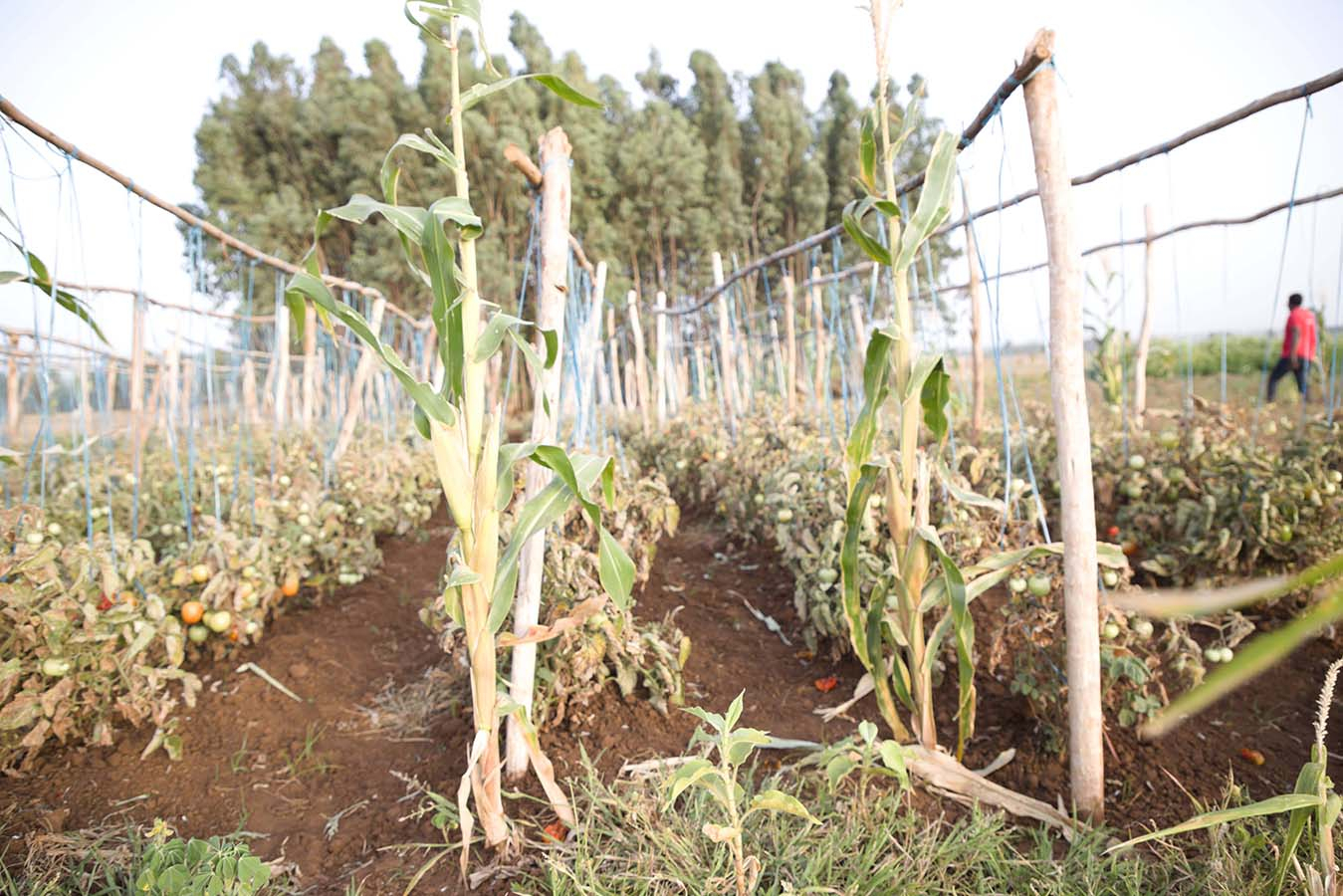
Winter irrigation-assisted cluster farming as a means to climate adaptation
Ethiopia’s economy is based mainly on agriculture, including crop and livestock production, which contributes 45% of the national Gross Domestic Product (GDP), more than 80% of employment and over 90% of the foreign exchange earnings. However, the Ethiopian economy, particularly agricultural development, is extremely vulnerable to external shocks such as climate change and global price fluctuations of exports and imports, according to a 2020 GIZ study.
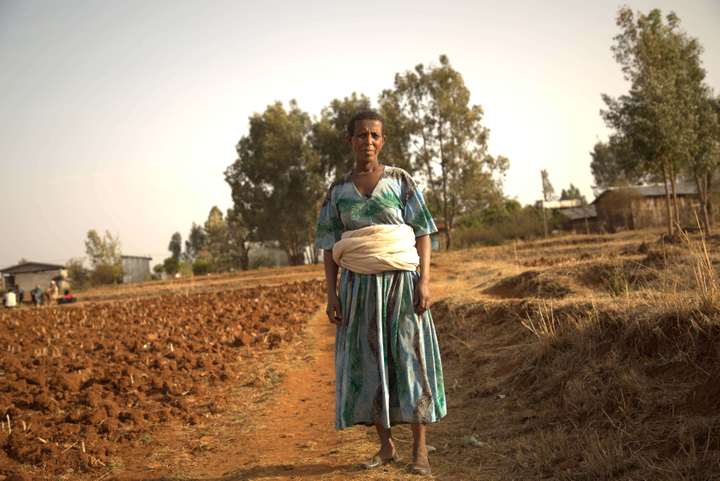
Wearing a long dress, and a necklace that is a symbol of Christianity, with a tattooed cultural cross on her chin and forehead, Semasch Alamer is getting ready for the harvest. The 48-year-old with five family members, grows maize, wheat and tomatoes in her small farmland located in Bahir Dar Zuria.
She reminisces about the 2007 floods which affected 239,5862 people, of whom 73,746 were displaced, in six regions including Amhara, Gambella, Afar, SNNP, Tigray and Somali during the rainy season.
“Our relatives’ homes were damaged and their crops were washed away in the flood. As a result, they were displaced, could not sustain themselves and had to be dependent on food aid,” says Alamer.
The last three consecutive years saw heavy floods in Fogera and Libo Kemkem districts of Lake Tana basins. According to UN Office for the Coordination of Humanitarian Affairs (OCHA) the floods affected 25,000 people, killed two people, flooded 6,653 houses, damaged 18 schools and destroyed 3,428 hectares of crop areas in 2019 alone.
“My crops were washed away by the floods in summer. We have seen the worst damage, especially where no retention wall and terraces are in place. We watched helplessly when the floods washed away and gorged our land,” recalls Tegegn.
According to Ewnete Takele, a plant science lecturer at Bahir Dar University, College of Agriculture and Environmental Sciences, climate change is a major threat to the country’s efforts to ensure food security.
Excessive heavy rains in Ethiopia that started in April and peaked in May have led to flooding, displacement, loss of lives and livelihoods, as well as damage to infrastructures in various regions. According to OCHA (2020), flooding affected more than 470,000 people, of whom more than 300,000 people were displaced - nearly 80% in the Somali region.
The BBC report (2020) shows that the number of people affected by flooding in East Africa has gone from 1.1 million in 2016 to four million in 2019, to close to six million in 2020. A deadly wetter-than-usual rainy season devastated communities across Sudan in 2020, as the Nile River and some of its tributaries reached their highest levels in 100 years. Widespread flooding has claimed at least 100 lives and damaged or destroyed more than 110,000 homes since mid-July 2020.
A press release published on April 2022 by the World Meteorological Organization (WMO) indicates that Eastern Africa is facing the very real prospect that the rains will fail for a fourth consecutive season, placing Ethiopia, Kenya and Somalia into a drought of a length not experienced in the last 40 years. The WMO estimates that more than 29 million people are facing high levels of food insecurity across the Intergovernmental Authority on Development (IGAD) region.
A 2022 IPCC report shows that climate change has caused substantial damages, and increasingly irreversible losses, in terrestrial, freshwater and coastal and open ocean marine ecosystems. According to the African Development Bank (AfD), Africa is the most vulnerable continent to climate change impacts. More specifically, the upper Nile Basin of western Ethiopia, South Sudan, and Uganda is at high risk of agricultural disruption due to climate extremes.
Ethiopia has endured 10 major droughts for the last four decades since 1980 and the average annual temperature has been increasing by 0.37 degrees C per decade, with the majority of warming occurring during the second half of the 1990s.
Data from USAID's Sustainable Water Partnership shows that the recent 2015-16 El Niño episode caused drought across large parts of eastern, southern and central Ethiopia with precipitation being 65% below average in the northeastern and central regions. Over 10 million people required emergency assistance, as one million livestock and 75% of croplands were lost in the most affected areas. Research findings from this year also indicate a 2.1- 4.1% reduction in rain-fed crop yield that caused a 2.4 to 9.7% drop in Ethiopia’s GDP.
The current population of Ethiopia is estimated at about 115 million and is expected to surpass 200 million by 2050. When the world population is estimated to surpass 9.1 billion by 2050, most of the world’s population growth in the next 40-50 years is expected to come from Africa. And Ethiopia, the second-most populous country in Africa as of today, will contribute to this growth.
“If we don’t transform our agriculture from traditional small-scale to medium or large-scale irrigation-assisted, mechanised winter farming, we can’t ensure food security, because, due to highest population growth, we’re facing land scarcity,” said the agricultural extension officer Tilahun.
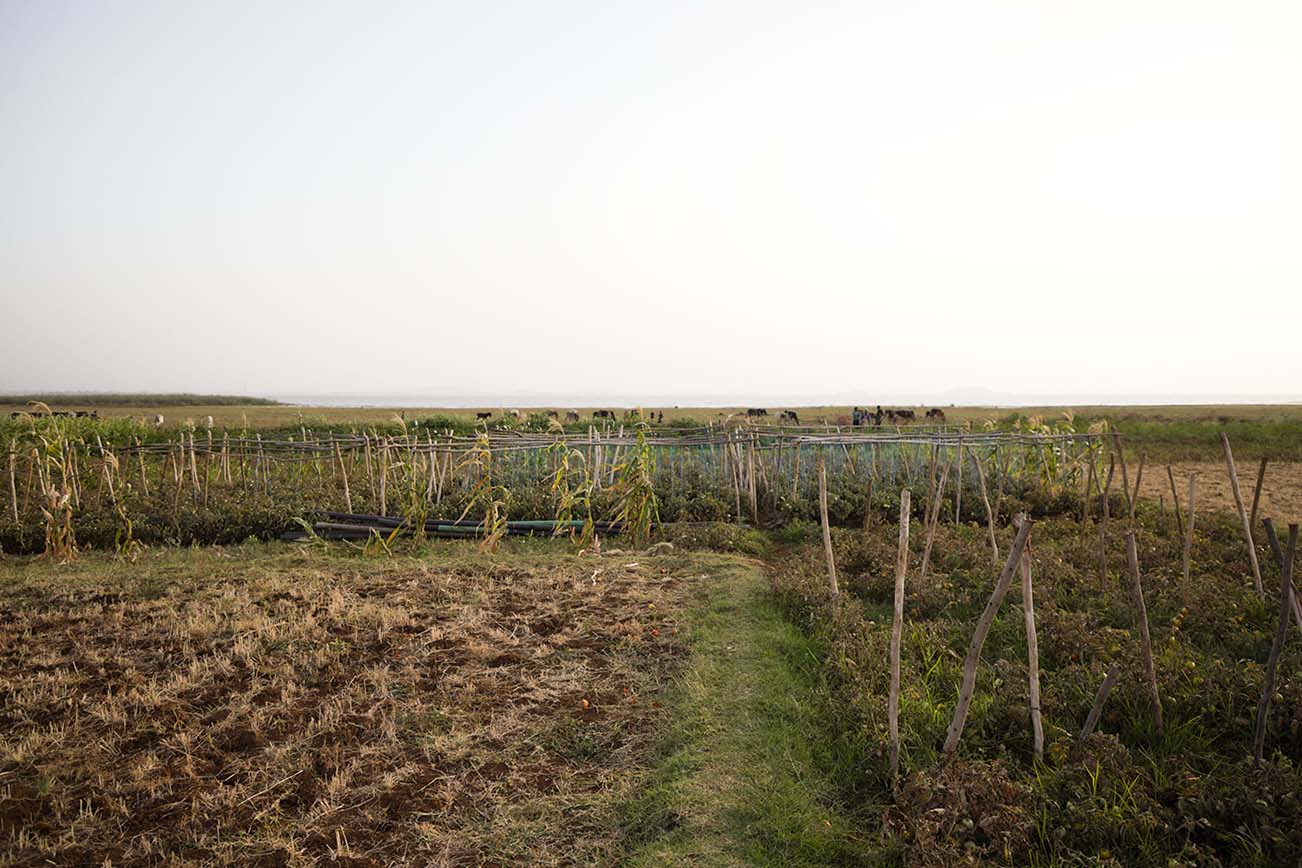
Data from NBI on irrigation development projection in the Nile countries as compiled from different sources since 1989 shows that the average annual rate of irrigation growth for the upper riparian countries is 18% every year. Though this is much higher compared to the downstream countries Sudan and Egypt, they start from a much lower base and as such the rapidity of their trend is to be expected.
The trend indicates the growth of irrigation in areas such as Egypt: from about 3 million hectares in 1989 to 6.5 million hectares in 2018, a 2% annual growth. And in Ethiopia, from 23,160 hectares in 1989 to 455,421 hectares in 2018, a 35% growth per year.
A recent research finding, Trend, Status, and Challenges of Irrigation Development in Ethiopia (2021) shows that the small-scale irrigation development in Ethiopia has a long history which probably pre-dates the Axum empire of more than 2,000 years ago. But a well-planned irrigation development targeting medium and large-scale schemes were started only two decades ago.
The area under small-scale irrigation has increased from 176,105 hectares in 1991 to 2.5 million hectares at the end of 2019. During the first Growth and Transformation Plan from 2010-11 to 2014-15, small-scale irrigation expansion increased by 15.2% per year. The second plan from 2015-16 to 2019-20 has not yet been fully evaluated.
The early 1991 medium and large-scale irrigation development was entirely initiated by joint concession with foreign commercial companies, specifically irrigated sugarcane farms mainly in Awash Basins of Wonji (5,000 hectares) and Metahara (11,000 hectares) which commenced operation in 1954 and 1965 respectively through a bilateral agreement between the government and Hangler Vondr Amsterdam, a Dutch company.
Merti and Jeju (1638 ha), a cotton irrigation project, developed in 1961-62 by an Italian named Seignior Tiliota Santo later nationalised, merged formed a horticultural crops farm called the Metri Fruit Processing Plant in 1975. The Amibara irrigated farm, a state-owned agriculture enterprise, comprising Melka Sedi and Mekla Werer (10,000 ha), and also the Nura Hira Horticulture Farm and Merti Agro-industry started operation in 1980 and 1983 respectively.
The worst 1984-85 famine was a major stimulus for the development of the government-sponsored small-scale irrigation programmes in areas where the government had established producer cooperatives. The plan was to develop 57,000 hectares of land; however, the success of this target was not evaluated due to a regime change in 1991.
Following the regime change, greater attention has been given to irrigation development in various national development programmes, including the Sustainable Development and Poverty Reduction Programme from 2002-2005, the Plan for Accelerated and Sustained Development to End Poverty from 2005-2010 and the Growth & Transformation Plans I & II from 2010-2020.
Annual reports of the Amhara Regional State Bureau of Agriculture on agricultural productions under small-scale irrigation show a decrease from about 110 million quintals from 932,743.27 hectares of irrigated land in the year 2018-19 to about 31 million quintals from 220,612.2 hectares of irrigated land in 2019-20. However, it has shown a slight increase in 2020-21, with 38 million quintals of production from 325,811.17 hectares of irrigated land.
Officials could not be reached to explain the decrease in irrigated land and productions from 2018/19 to 2019-20.
In May 2019, the Ministry of Finance removed taxes for import of mechanical equipment, besides irrigation and animal feed technologies and equipment.
“The Agricultural Transformation Council provided direction to facilitate farmers access to agricultural technologies which will ensure food security at the household level and national nutrition development,” the ATA website states.
Medium and large-scale irrigation schemes are developed by the Ethiopian Sugar Corporation (ESC) for sugarcane production and processing, by private investors for the production of commercial crops, and also by smallholder farmers. Currently, the ESC is managing some 160,921 hectares of irrigated land for sugarcane production distributed over eight projects located in different areas of Ethiopia.
In total, some 300,000-hectare irrigation command area is operated by the ESC, which is more than 50% of the total irrigated area under medium and large-scale projects in the country.
However, reports indicate that currently only about 50% of the irrigation schemes are considered proven functional. The remaining 34% of the implemented schemes are not utilised with full capacity and 16% are non-functional.

Disproportionate irrigation development systems in the Nile Basins
The Nile Basin Initiative’s (NBI) technical report, Scenarios for Water Saving in Irrigated Agriculture (2020), indicates that 98% of the existing irrigation systems in the Nile Basin are in Egypt (58%) and Sudan (30%). Irrigation in the rest of the nine upper riparian countries amounts to only about 2% of the total irrigated area in the Nile Basin.
About 10% of the arable land in Ethiopia is irrigable. However, less than 6% of the irrigation potential is utilised. The country’s reliance on rain-fed agriculture limits productivity and increases the vulnerability of farmers to droughts and the effects of climate change. GIZ and other development partners indicate that irrigation is one of the key pathways to building resilience towards climate change, eventually leading to poverty reduction and key development goals in Ethiopia.
Climate-resilient agricultural system is a must, not a choice, for Ethiopian farmers like Semachsh, who have no access to modern agricultural technology and inputs.
“Our farmlands and fertilisers are washed away and wasted by floods during summer. But our crops are not affected by floods and snow if we farm in winter. We can be assured of the yield without worrying flooding damage,” says Semachsh.
The winter farming has been expanding since 2021 in the area where Tegegn and Semachsh live.
“Earlier we didn’t grow tomatoes in winter. But I got support from NGOs, produced tomatoes, and earned 35,000 Birr (EUR 660). I am doing better financially. Others are following my footsteps and starting winter farming,” says Semachsh.
Semachsh and the other farmers feel the winter farming will be more beneficial if the government provides additional support for fuel, fertiliser, irrigation pumps and pipes.
“If the government gives us loan to buy water pumps, modified plastic pipes and fuel, we can produce even more. Even though the agriculture extension experts are advising us and giving direction, we also need support from the government in establishing a market centre in our area to avoid middlemen’s market abuse,” says Tegegn. He is also advising other farmers to practise winter farming.
The farmers say that a Koga-like dam – referring to an irrigation project – would also benefit them.
Constructing medium and large-scale irrigation dams can help farmers adapt to the impacts of climate change, says Alehegn Kinde, who works at the Amhara Regional State Bureau of Agriculture as an expert on fruit, vegetables and crop protection. He says the current irrigation dams have not been functional.
“Even though the Ribb medium-scale irrigation dam was inaugurated, the structural works of canals have not been finalised yet due to lack of budget from the federal government. Even Megech and Serba dams are half functional,” says Kinde, insinuating the initiative as more of a political propaganda than a development work.
Alehegn Kinde says if the government helps the farmers with advanced agricultural technologies, there is a huge potential for successful winter farming in the Amhara region, because of the stable water supply.
“In summer the rain may occur before or after harvesting and wash away the crops,” he says.
But according to Takele, the plant sciences expert, in winter cluster farming soil and fertilisers are washed away to a lesser extent and more nutrients are retained in the soil.
“We have gained higher wheat production from this year’s irrigation-assisted cluster farming in Zenzelima, Bahir Dar Zuria areas,” says Takele. “There is potential to expand the model to Robit district, where mechanised farming system Is not in practice now.”
The expert’s views align with the farmers’ experiences in getting better yield. As this translates as better income and food security in the face of a changing climate, irrigated winter farming offers hope to small holder farmers.
Conjunctive water management in glimpse of cooperation
According to the Nile Basin Initiative, the use of both surface water and groundwater will be an essential strategy for the basin countries to adapt to climate change while ensuring water security.
A large volume of water is released into the basin lakes and rivers due to high rainfall and extreme weather in the upper riparian countries, which could be stored and released during winter. For the Blue Nile, on an average, 82% of the annual flow occurs in just four months from July to October, whereas for River Setit 80% of the flow occurs in just three months, according to the NBI synthesis report.
A large volume of water from the Nile is also lost due to evaporation. This is higher in downstream Egypt and Sudan than in Ethiopia, where a significant amount of water can be stored in summer in a series of reservoirs in the cool highlands, according to NBI. From these man-made reservoirs, water can be pumped to farmers’ fields to grow crops any time of the year. It would help farmers in Amhara region and elsewhere in the basin to adapt to climate change effects.
In Egypt and Sudan, where water evaporates at a much higher rate, underground water is recommended to facilitate a large share of irrigation. Egypt and Sudan share the largest non-renewable groundwater aquifer in the world with Libya and Chad. It is estimated that of the more than 500,000 cubic kilometres of water stored in the aquifers, about 14,818 cubic kilometres is recoverable, including about 5,525 cubic kilometres in Egypt and 4,787 cubic kilometres in Sudan, according to NBI.
Along with extracting groundwater, improving storage capacity by increasing the size or number of dams and reservoirs, desalination of seawater, expansion of rainwater storage and water transfer are also noted as effective measures of climate change adaptation.
This story was produced in June 2022, supported by InfoNile and Media in Cooperation and Transition (MiCT) in collaboration with the Nile Basin Initiative (NBI) and with support from the Deutche Gesellschaft fur Internationale Zusammenarbeit (GIZ) GmbH, commissioned by the European Union and Federal German Government.
For this story, Dagim Terefe worked together with assistant data collector Manyazewal Getachew.

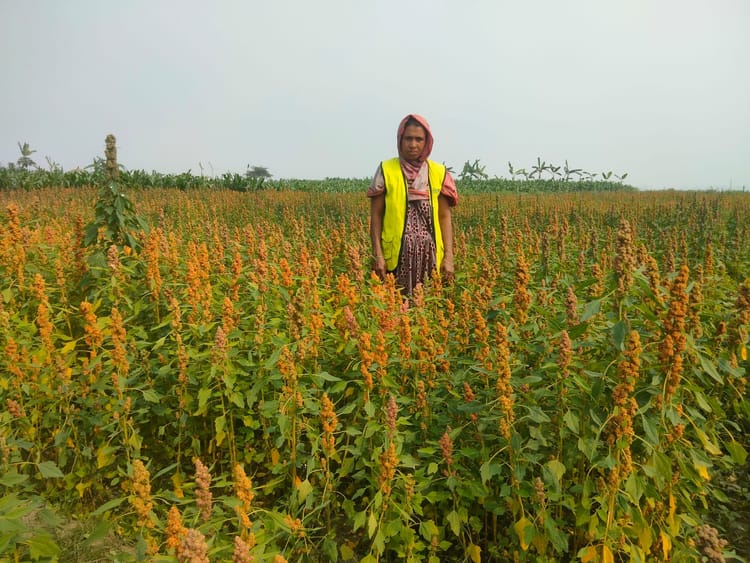

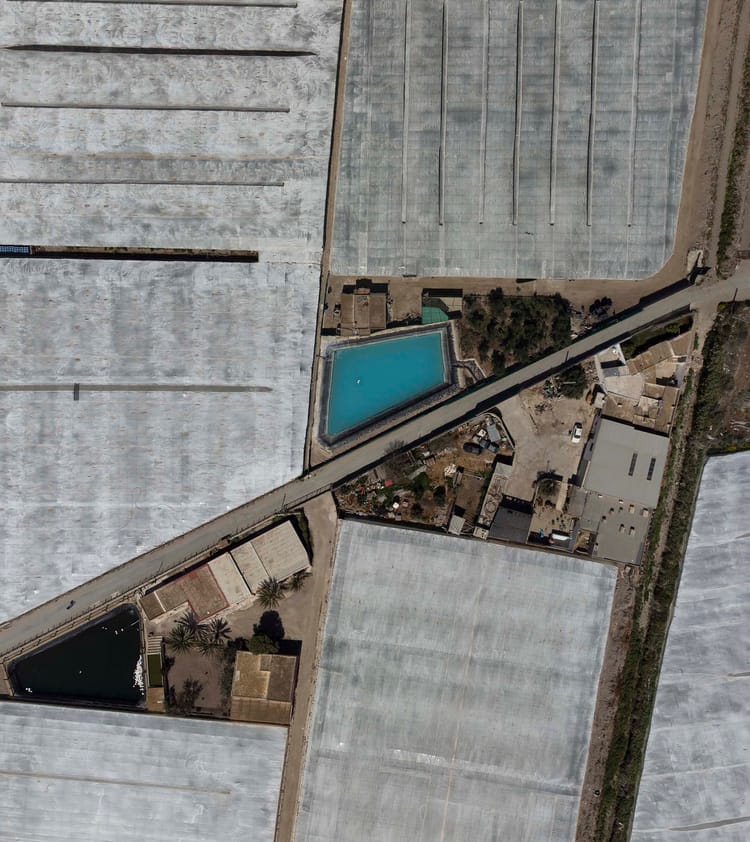


Member discussion